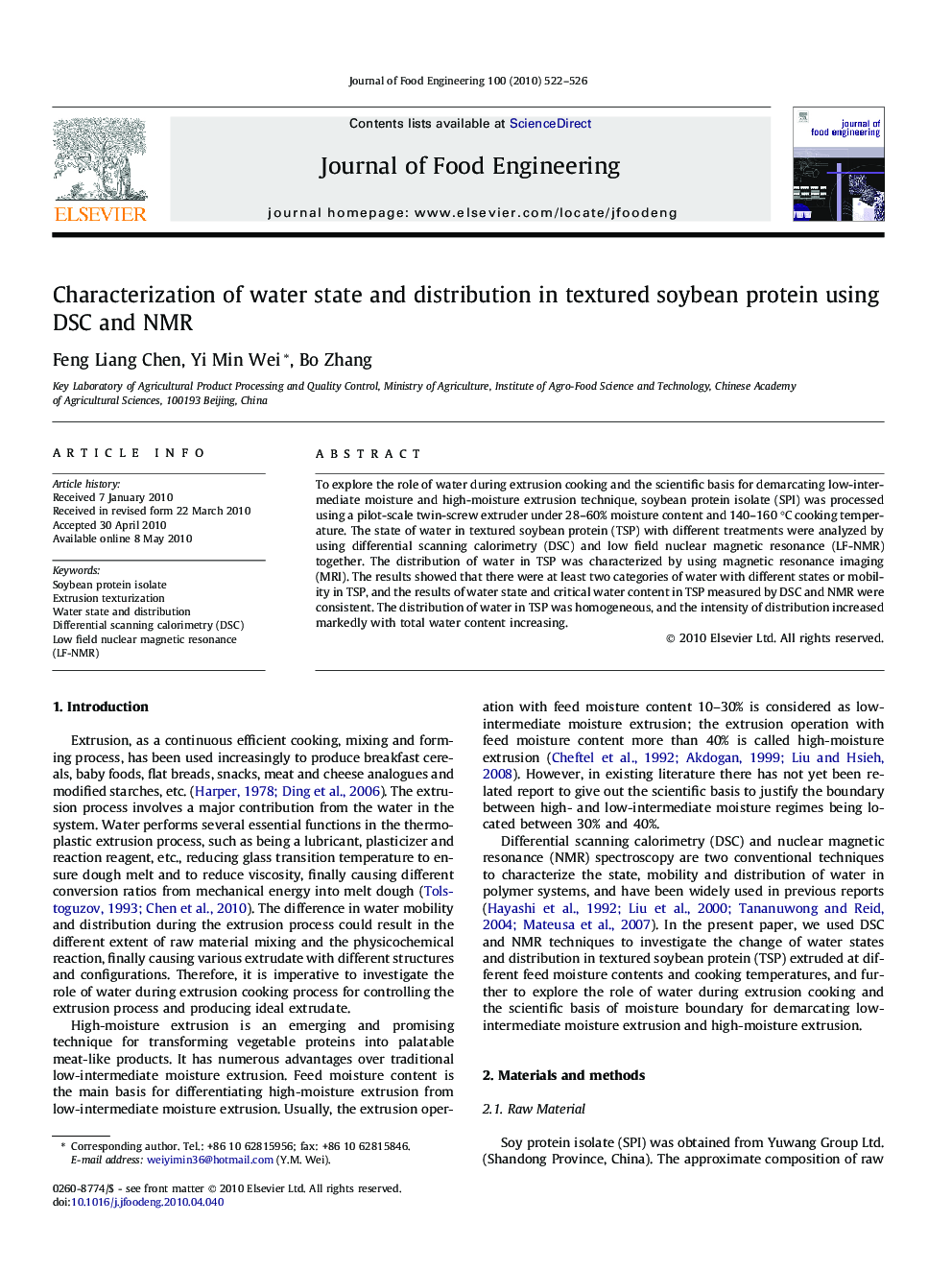| Article ID | Journal | Published Year | Pages | File Type |
|---|---|---|---|---|
| 223848 | Journal of Food Engineering | 2010 | 5 Pages |
To explore the role of water during extrusion cooking and the scientific basis for demarcating low-intermediate moisture and high-moisture extrusion technique, soybean protein isolate (SPI) was processed using a pilot-scale twin-screw extruder under 28–60% moisture content and 140–160 °C cooking temperature. The state of water in textured soybean protein (TSP) with different treatments were analyzed by using differential scanning calorimetry (DSC) and low field nuclear magnetic resonance (LF-NMR) together. The distribution of water in TSP was characterized by using magnetic resonance imaging (MRI). The results showed that there were at least two categories of water with different states or mobility in TSP, and the results of water state and critical water content in TSP measured by DSC and NMR were consistent. The distribution of water in TSP was homogeneous, and the intensity of distribution increased markedly with total water content increasing.
